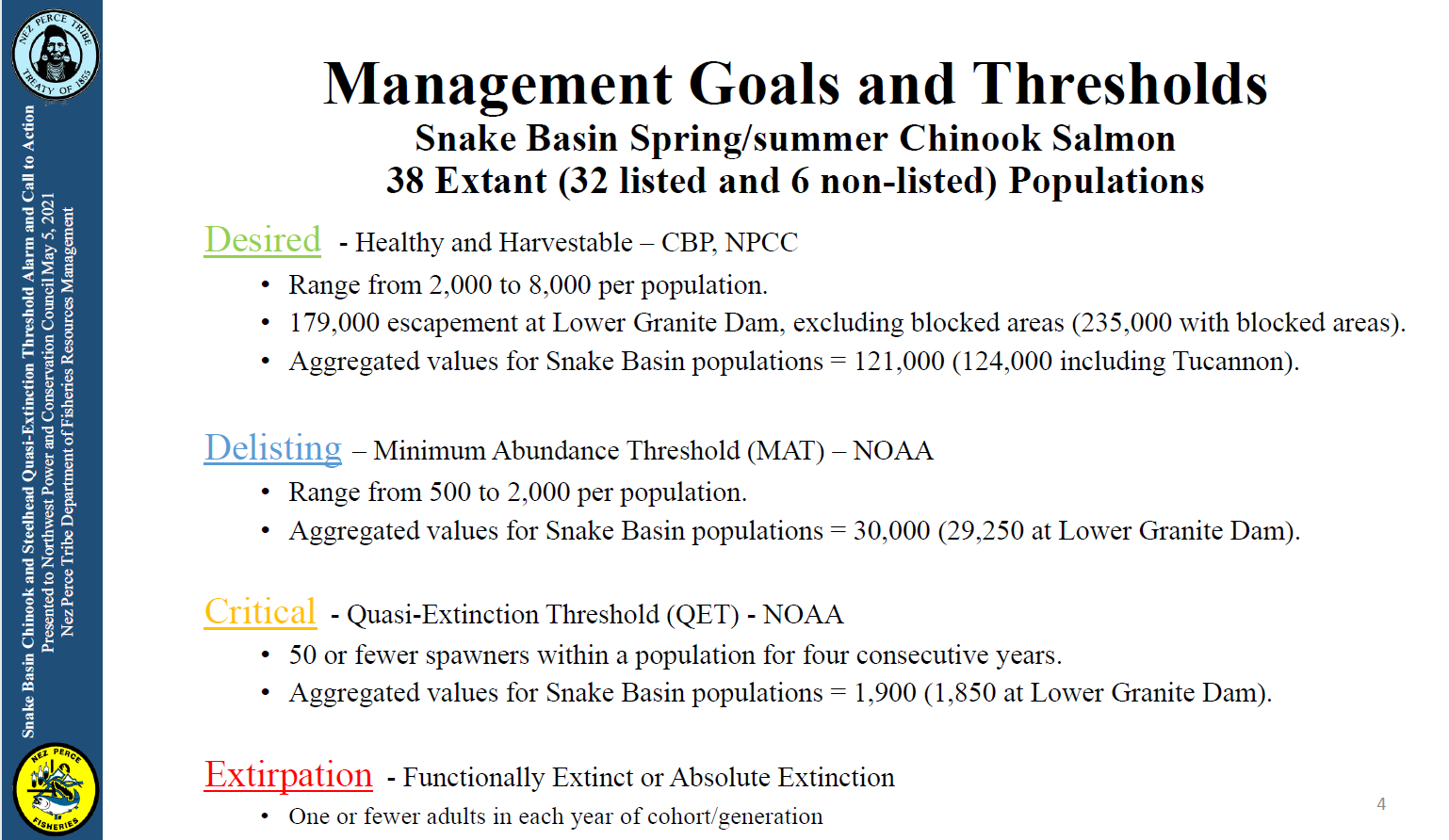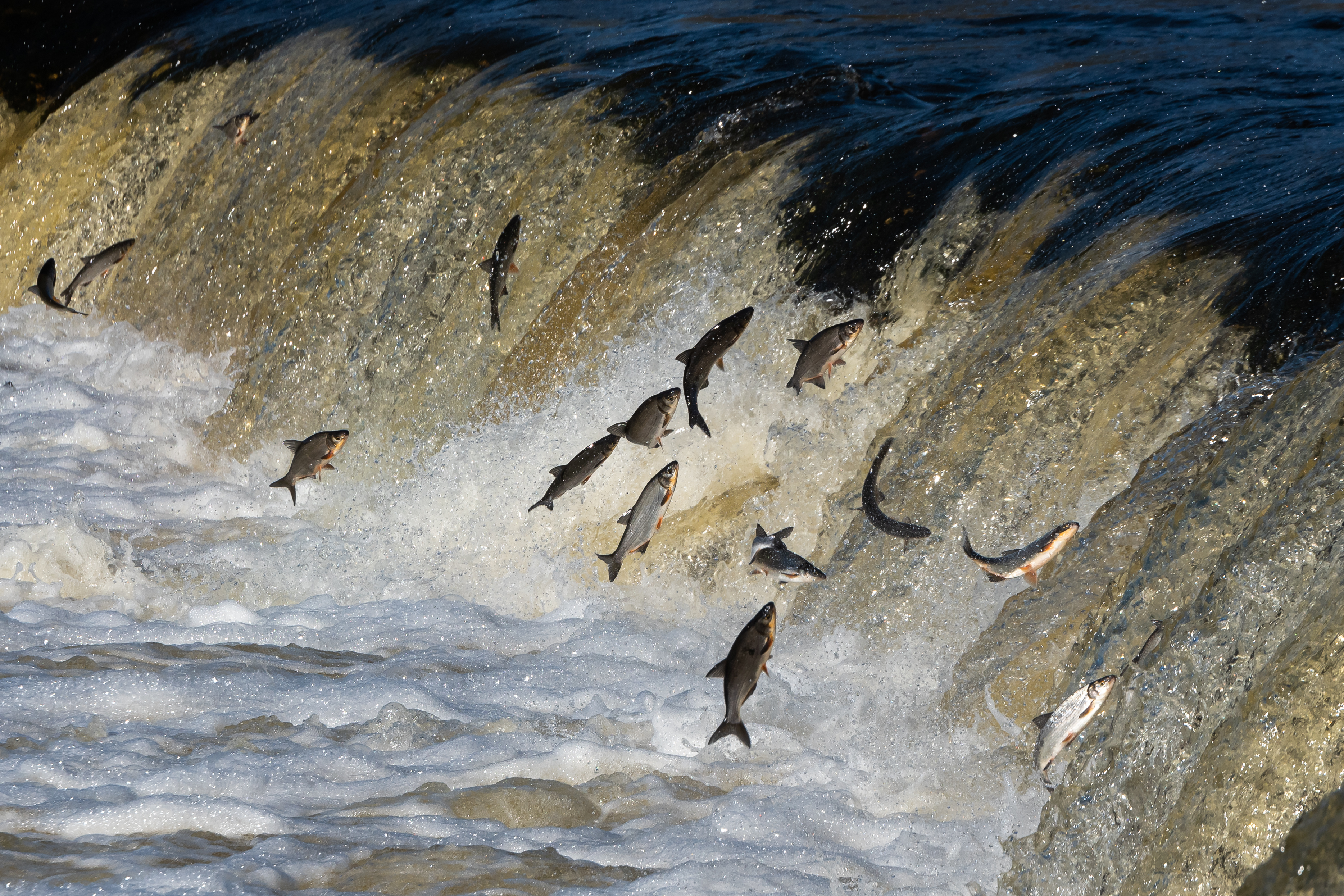Frustration at the slow pace of salmon recovery should not be the basis for spending $35 billion to destroy the four Lower Snake River dams. That was my basic message in my testimony yesterday on the status of salmon on the Snake River.
Members of the U.S. House Committee on Natural Resources held a hearing about the four Lower Snake River dams and invited me to discuss the state of salmon on the river and across the Pacific Northwest.
In my testimony, I made three key points.
First, although the slow rate of recovery of salmon populations on the Snake River is frustrating, it is not unique. I quoted a recent Seattle Times article noting that despite efforts to recover salmon on the Snohomish – which has no dams – fishing has been closed this year. Across the Pacific Northwest, salmon are struggling and fixating on one river is counterproductive.
Second, rather than sticking with science-based efforts which are effective, albeit slow, the frustration at the state of salmon is causing some to grasp at silver bullet strategies like destroying dams. This would be a mistake because the complex web of threats to salmon means there are no silver bullet strategies and spending $35 billion – or more – in one place would be a remarkable misallocation of resources.
Finally, some are engaging in hyperbole to generate political pressure to destroy the dams even if the scientific data are not on their side. I pointed out that claims Snake River salmon would soon be extinct have been contradicted by real-world data.
You can watch my testimony below.
After the hearing, dam opponents raised a couple of arguments that I addressed in my full, written testimony but not at the hearing.
One dam opponent told a reporter for the Spokesman-Review that “In river systems with fewer dam passages, such as the Deschutes and Yakima rivers, smolt-to-adult numbers are as high as 3.5%,” which is much higher than in the Snake River. Smolt-to-adult return ratios, known as SARs, is the percentage of salmon that return after going downstream. Claiming that Snake River SARs is worse than in other places, particularly the Yakima, is a standard argument from dam opponents, so I addressed it in my written testimony. I wrote that, “salmon recovery experts I spoke to in the Yakima River watershed indicate that while the SARs were good for a short period of time, the current SARs may actually be lower than the Snake.” The recent data bear this out.
The last time the SARs for the Yakima was anything near 3.5% was a decade ago. Since then, Yakima SARs have ranged between 0.6% and 2.7%.
Additionally, while Snake River SARs are low, the difference between the Yakima and Snake isn’t very large. For example, the SARs for the Yakima River for the 2019 outmigration year were 0.8%. For the Snake River above Lower Granite Dam it was 0.97%. In 2018, they were switched, with the Yakima having an SAR of 1.5% and the Snake an SAR of 0.61%. None of those numbers are good, but they demonstrate that salmon everywhere – even in places highlighted by dam opponents as exemplary – are bad.
This also ignores the many rivers without dams where returns are poor. “The same data…show that two rivers even farther downstream – the Warm Springs River and the Carson River – have lower SARs than the Snake River populations,” I noted in my written testimony. “If dams are the cause of low SARs, why do returning salmon that pass fewer (or no) dams have even worse return rates?”
 During the hearing I noted that although dam opponents claimed that wild Chinook would steadily decline and be “functionally extinct” by 2025, the return doubled in 2022, contrary to their predictions. Responding to the reporter, a representative of the Nez Perce tribe said, “That sounds great. But when you go from 8,000 to 16,000 and your goal is 235,000, that’s just annual variation.”
During the hearing I noted that although dam opponents claimed that wild Chinook would steadily decline and be “functionally extinct” by 2025, the return doubled in 2022, contrary to their predictions. Responding to the reporter, a representative of the Nez Perce tribe said, “That sounds great. But when you go from 8,000 to 16,000 and your goal is 235,000, that’s just annual variation.”
First, the number 235,000 is not a recovery goal, but an aspirational goal. Indeed, in their own presentation two years ago, the Nez Perce noted that the delisting target is 30,000 and the “desired” goal is 121,000.
Second, as is obvious from the numbers on their slide, an increase of 8,000 salmon is not “annual variation.” That amount of wild Chinook is far more than annual variation and it is also entirely outside their own prediction.
I have a lot of sympathy for the Nez Perce and others in Idaho who want more fish, both to catch and because salmon as a species is valuable. But the claims and thresholds keep changing and they don’t match the real-world data.
We can recover salmon, and as the West Coast Regional Administrator for NOAA Jennifer Quan testified, “NOAA Fisheries concluded that the proposed action—the operation, maintenance, and associated non-operational conservation measures for the 14 federal Columbia River System dams for a timeframe of fifteen years—was not likely to jeopardize the continued existence of listed salmon and steelhead or result in the destruction or adverse modification of their designated critical habitat.”
We need salmon to recover more quickly, but destroying the dams is not the way to do that.
You can read my full testimony here: https://naturalresources.house.gov/uploadedfiles/testimony_myers.pdf
You can see full video of the hearing here: https://naturalresources.house.gov/calendar/eventsingle.aspx?EventID=413489





